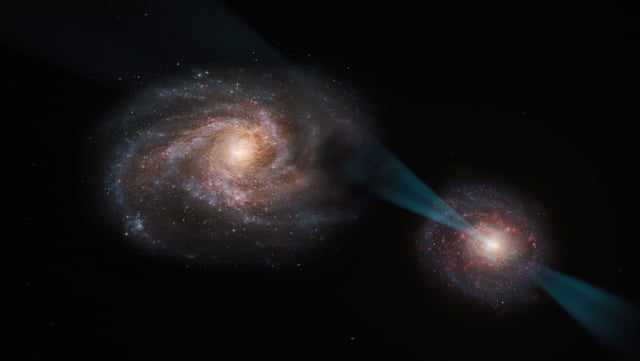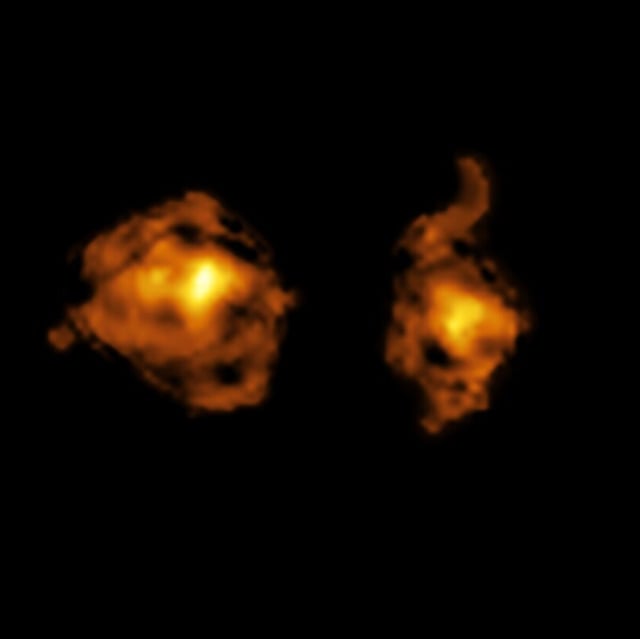Overview
- Scientists directly observed a quasar's radiation piercing a companion galaxy during a merger 11 billion years ago, marking the first confirmed sighting of this phenomenon.
- The quasar's intense radiation disrupted the gas structure in the companion galaxy, preventing the formation of new stars in affected regions.
- This discovery supports longstanding theories that galaxy mergers trigger quasars and that quasar feedback plays a key role in shaping galaxy evolution.
- The observations were made using advanced imaging and spectroscopy from the Atacama Large Millimeter/submillimeter Array (ALMA) and ESO’s Very Large Telescope (VLT).
- Future studies with next-generation telescopes aim to deepen understanding of quasar effects on galaxies and their role in the universe’s early evolution.

